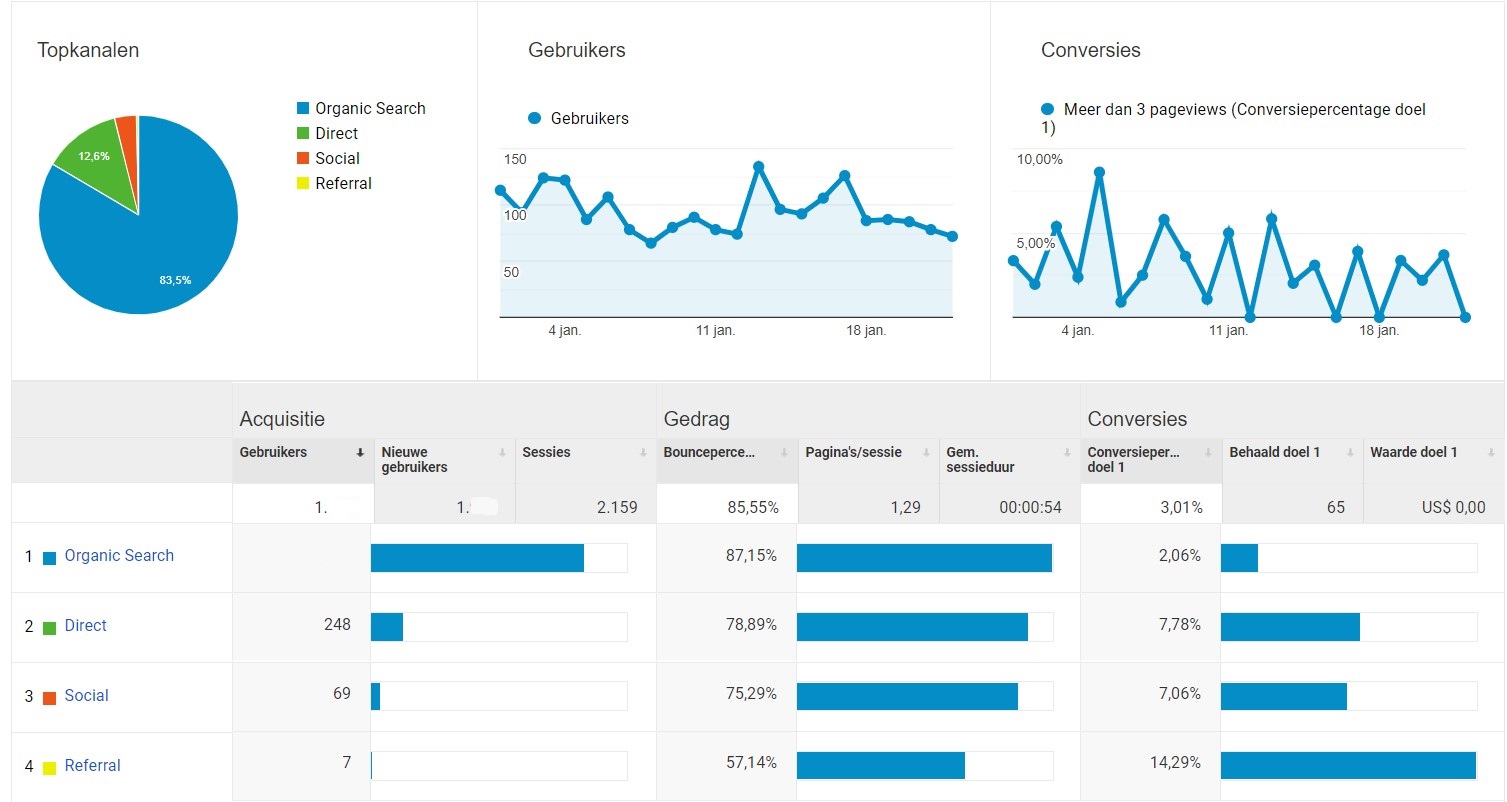Traffic sources of a website
A website can have many sources of traffic. Traffic to a website is a thing for almost every website to have a lot of. Whether you want the latest blog posts read a lot, want more eyes on your services or want more visitors to your web shop. How do you keep track of the different sources. And how do you make the most of them? We cover that in this blog post.
With a website you can have many goals. Informing visitors, activating them or somewhere in between. With a website it is often essential to attract many visitors. You will generally see your sales increase because of this. The advertisements become more valuable on your website. Your links will be clicked on more often and more purchases will be made. So more website traffic can be a goal for many. There are a number of types of traffic and we can break this down into a number of groups.
Tools you can use to keep track of this
Most people will be familiar with Google Analytics, this tool from Google can make it easy for you to keep track of where your visitors are coming from. With their easy interface, which can be quite complex, it will be clear to many webmasters how this works. Combine that with the easy installation and integration with other Google tools. Google Analytics is actually seen as the standard tool for this.
Recently, however, an alternative from Microsoft has been added, namely Microsoft Clarity. This tool offers a number of extras that Google Analytics itself does not have. Such as a session playback per user and a heatmap function. This makes it easier for developers and employees to see how visitors interact with your website.
The choice between the tool you use for tracking website statistics is entirely up to you. And with MijnHostingPartner.nl hosting you are completely free of course.
Direct traffic
Direct traffic are visitors that come to your website without an intermediary, often these are people who directly enter your domain name. Or through another way to come on your website. Direct traffic can also often come from Social Media or via another route that is not directly tracked by Google Analytics. All other traffic is then put under the heading of Direct traffic. There are also users who use their browsers to block trackers.
Direct traffic is often the least valuable way to bring in new customers or perform another action on your website. There is no way to track where it is coming from. So you can't determine where to put further effort. However, you can take action on this outside of direct statistics to determine where it is coming from. Look at the location of the traffic, for example, is it coming from a central location? The same place where you put up a poster, for example. Or did you just make a Reddit post where a lot of traffic could be coming from. Again, with different pages you can track this better.
Social traffic
Social traffic is all the traffic that comes from social media channels. It may be that you are able to get this traffic through your own social media channels, but it can also be that a link from your website is shared by a third party on social media. For further information, look again at the pages that the visitors of this site visit.
Well-known social media channels that you can use include Facebook, Twitter, Reddit and others. All can be used to ensure that traffic from those channels comes in to your website. However, it often takes interaction and interesting posts that are shared.
Organic traffic
Organic traffic is for many webmasters the most important traffic target, because organic traffic is in most cases unpaid and can bring in reliable traffic over a long period of time. Of course, this does have its snags. With search engines that can sink your website without any notice. But overall, with good text, and a good user experience. You can make sure that your website is at the top for a long time.
The search engines you will see in the organic results may vary, but most results will come from Google. Bing, DuckDuckGo and Ecosia. These search engines are the most popular and all offer results from searches. Not all in the same way though.
Referral traffic
Referral traffic comes from other websites, this may be that you are linked from another website. Like a forum or a colleague in the website world. You can see in most analytics tools also neatly where the visitor comes from. And so you can check if here is linked to your website. It is often advisable to check where and how exactly people link to you. It may also be that a piece of your website is copied. Always check this.
Paid traffic
Paid traffic is often from ads that you turn on social media, search results or in the display network. These ads are also often shown on other websites that cover similar topics. These ads are often in addition to Google Analytics further in Google Ads to see. Here you can see the results of campaigns. And how they performed.
Paid traffic of course stops immediately when you stop spending money on it. It is often an important source of website traffic that converts, provided it is optimized for those who are most likely to purchase your services.
We hope that with this explanation you have a better understanding of what traffic sources you can see back on your website. For more tips, read the previous blog posts to get more out of this as well.
